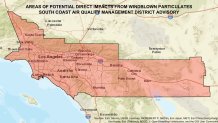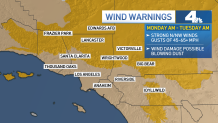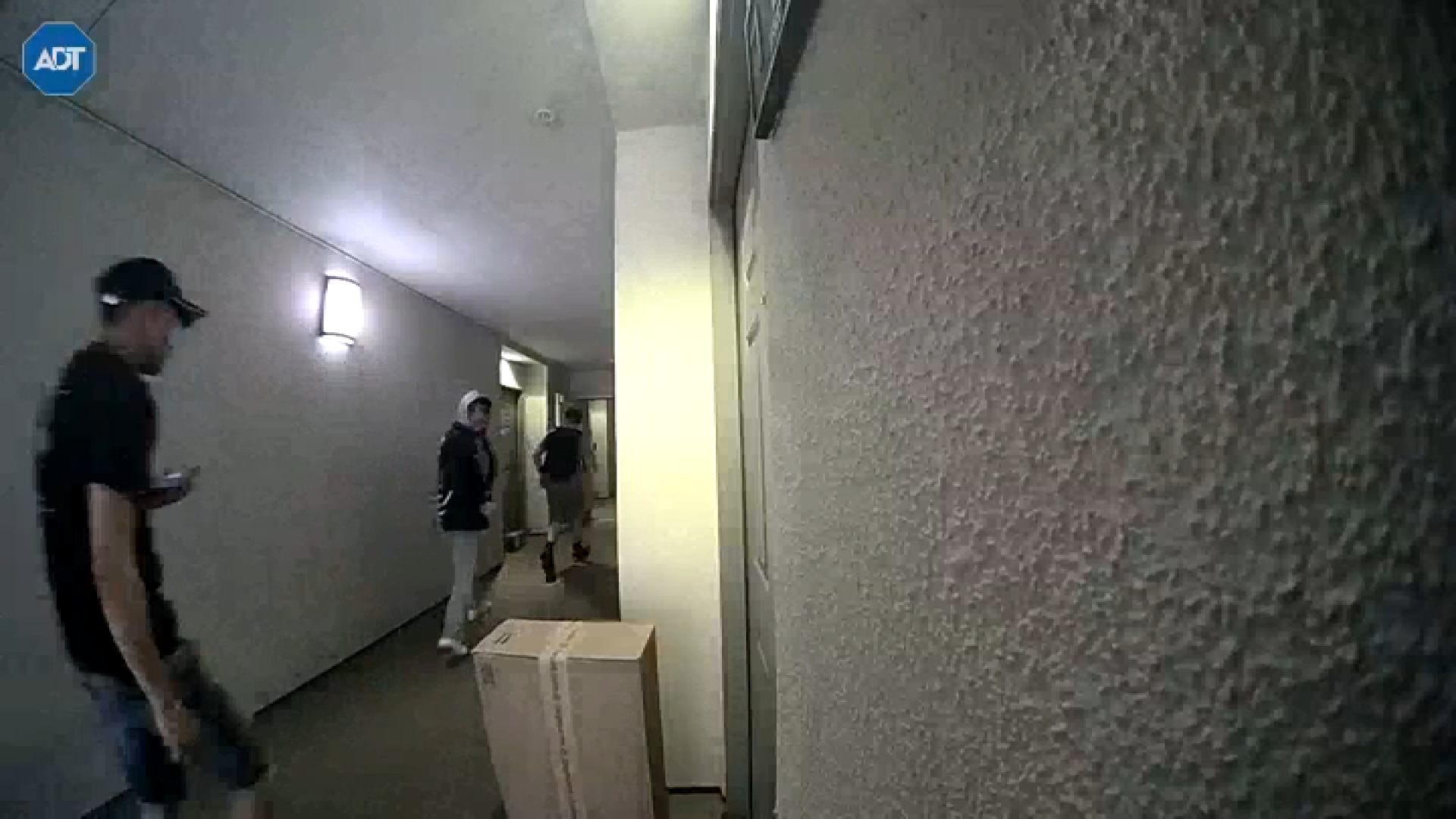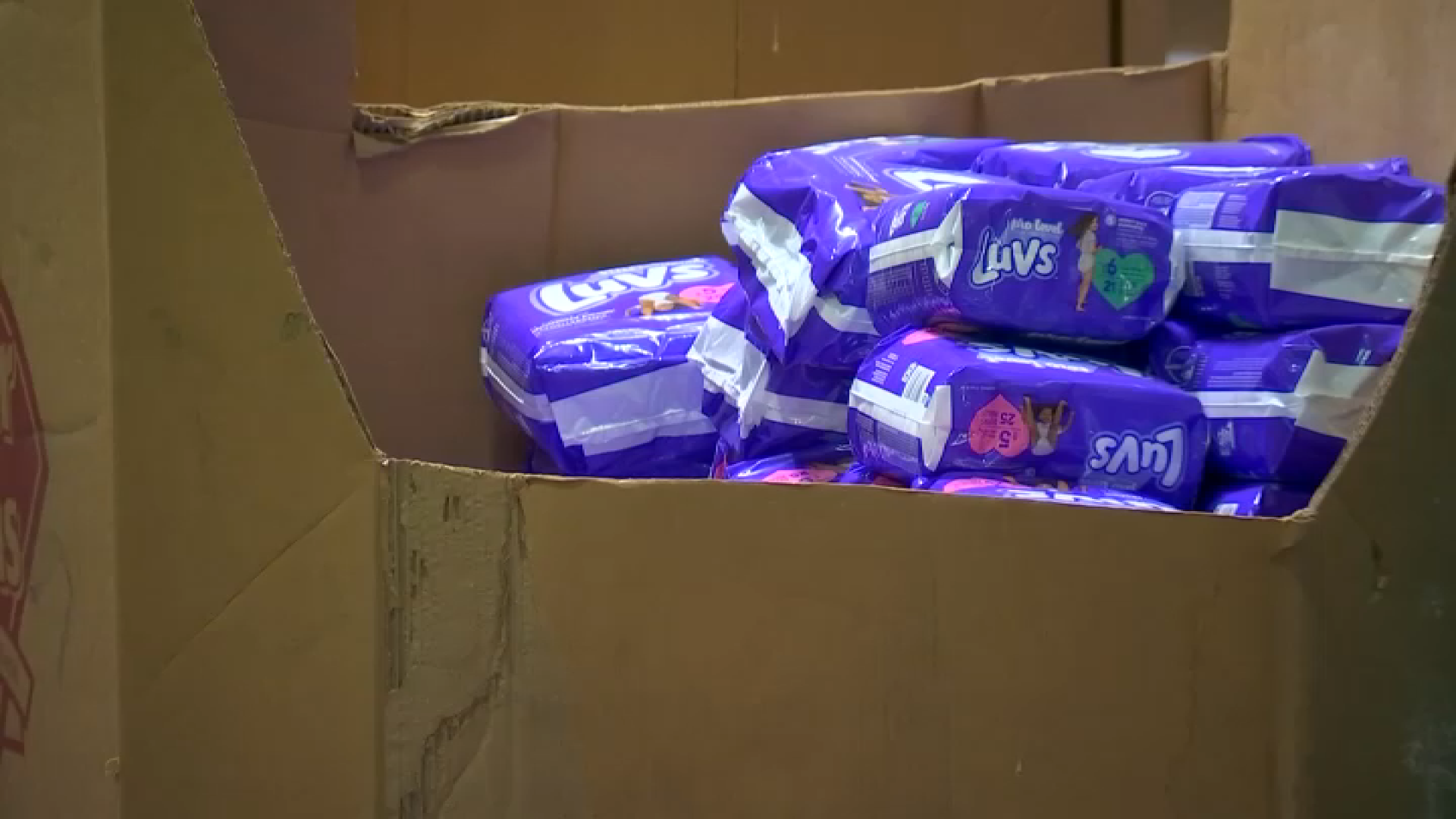Some of the strongest winds of the season roared into Southern California to start the week, whipping up dust storms, toppling trees and triggering power outages.
A wind advisory remains in effect Tuesday morning for some areas as winds decrease. An autumn chill will last into Tuesday before a warming trend for the remainder of the week.
Wind advisories were extended until 3 p.m. for the Santa Clarita Valley and Los Angeles Mountains, excluding the Santa Monica Range. Monday's wind advisories were allowed to expire for the LA County coast, downtown LA. and the San Fernando and San Gabriel valleys, but breezy conditions were expected to remain in other areas as a storm system moves out of the area.

Get Southern California news, weather forecasts and entertainment stories to your inbox. Sign up for NBC LA newsletters.
A widespread part of Southern California is under a a dust advisory through Tuesday due to high winds. Blowing dust can create hazardous and unhealthy air quality levels. The South Coast Air Quality Management District said people in areas with windblown dust should, if possible, stay indoors with windows and doors closed.
A high surf advisory also is in effect until 8 a.m. in Los Angeles and Orange counties.
High winds that caused a dust storm prompted a closure of the Antelope Valley (14) Freeway Monday in the Lancaster area. The 14 Freeway was closed in both directions about 10 a.m. between Avenue A and Avenue I, according to the California Highway Patrol.
The dust storm resulted in low to zero visibility, the CHP reported.

The weather is more extreme in southwestern California counties, including Orange, San Diego, Riverside and San Bernardino, where there are also wind and high surf advisories in effect through Tuesday. Gusts could hit 50 to 70 MPH in the mountains and adjacent desert slopes, according to NWS officials.
Local
Get Los Angeles's latest local news on crime, entertainment, weather, schools, COVID, cost of living and more. Here's your go-to source for today's LA news.
Desert areas in those regions will get gusts of 35 to 55 MPH, while the coasts and valleys will reach 25 to 35 MPH.
There was a small chance of showers mainly in the mountains or far inland valleys and foothills, with a high wind warning and frost advisory in effect Monday night in the Antelope Valley. A dusting of snow was forecast above about 7,000 feet.
SoCal Edison said Monday that some residents in Kern, Los Angeles and Ventura counties might face shutoffs as the region prepares for gusts that could cause wildfires to spread rapidly if sparked by downed power lines. Strong wind gusts are expected to build Monday afternoon during one of the region's most dangerous times of the year for wildfires.
As of 4 a.m. Tuesday, the Los Angeles Department of Water and Power reported a total of 10,200 customers affected without power. Historic South Central had the most customers without power at 2,900.
Since Monday night, 22,900 customers have had their power restored by LADWP.
By 10 a.m. Tuesday, 3,588 customers of LADWP were without power in the city of LA, and, 29,064 had their power restored.
Note: The Los Angeles Department of Water and Power does not use proactive power shut-offs. The areas below are in the SoCal Edison service area.
Where are public safety power shutoffs possible?
- Los Angeles County: 5,608
- Ventura County: 3,174
- Kern County: 328
Why shut off power?
Most of the deadly California fires over the past several decades, including the fire that destroyed the town of Paradise in Northern California, have been the result of power lines in high-wind situations.
Add in Southern California's infamous Santa Ana winds, and you have extremely volatile conditions. The winds can fan flames sparked by downed power lines.
Where are the possible outage areas?
For a detailed listing of all areas affected and maps to check if you may face a proactive shut-off, visit SCE's Public Safety Power Shutoff page.
How do proactive outages work?
Meteorologists and other SoCal Edison staff members use high-resolution weather data maps and other tools to monitor extreme fire weather. SoCal Edison also uses weather stations, historical data and fire monitoring cameras to determine fire potential.
If conditions warrant, the utility will shut off power in high-risk areas. Customers can receive notifications about outages in their area through emails, text or phone calls. The utility will alert first responders, local governments and customers of power shut-off.
Here are some of the factors the utility considers before declaring an outage.
- High winds, including red flag warnings
- Low humidity
- Dry vegetation that provide fire fuel
- On-the-ground observations
- Fire threat to electric infrastructure
- Public safety risk
An initial notification is sent out about two days before a possible shut-off to warn customers. A second notification will be sent a day before, then notifications are sent when power is shut off and when it's restored. Restoration is based on when weather conditions are deemed safe.
Why are Santa Ana winds so dangerous?
The fire-whipping winds are produced by surface high pressure over the Great Basin squeezing air down through canyons and passes in Southern California's mountain ranges. They're common in the fall and have a long history of fanning destructive wildfires in the region.
Fall is historically the worst time of the year for damaging wildfires in California. Seven of the state's 10-most destructive wildfires have occurred in October and November.



